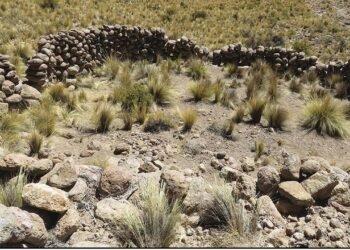They discovered 88 old footprints. It is believed to have been left behind by humans at least 12,000 years ago.

‘Ghost tracks’ are enigmatic footprints that absorb wet and darken when it rains and vanish when it dries, making them indistinguishable from the surrounding surroundings.
The unusual impressions were discovered by accident in early July 2022. The researchers first discovered only a few footprints, but a thorough sweep of the surrounding area using ground-penetrating radar (GPR) revealed at least 88 unique footprints belonging to adults and children as young as 5 years old.
The 5,000-acre archaeological survey holds other artifacts dating back to the Ice Age.
“Based on excavations of several prints, we uncovered evidence of adults with children aged 5 to 12 leaving bare footprints,” said Daron Duke, principal investigator with Far Western Anthropological Research Group.
“People appear to have been walking in shallow water, with the sand rapidly infilling their print behind them, similar to what you could see on a beach, but under the sand was a layer of mud that preserved the print intact after infilling.”
The discovery of so many ancient footprints is a “once-in-a-lifetime discovery,” Anya Kitterman, the cultural resource manager at Hill Air Force Base who directed the archaeological work, said in a statement. “We found so much more than we bargained for.”
“We’ve long wondered whether other sites like White Sands were out there and if GPR would be effective for imaging footprints at other locations,” said Thomas Urban, an archaeologist at Cornell University who developed the GPR survey technique used at White Sands and, more recently, at the Hill Air Force Base. “The answer is yes to both questions.”
When the area was still a vast wetland, bare human feet left ghostly traces. However, researchers suspect that the tracks could date back as far as 12,000 years, during the last ice age of the Pleistocene epoch (2.6 million to 11,700 years ago).
The discovery of prehistoric footprints in Utah is only the second in the United States. Last year, Pleistocene-Age human footprints dating between 21,000 and 23,000 years ago were found in New Mexico’s White Sands National Park.
However, because researchers are still analyzing the footprints, the discovery has not yet been published in a peer-reviewed journal.






















